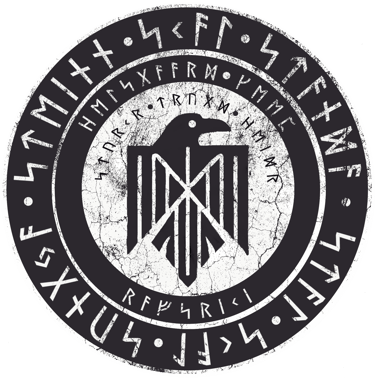
The Valknut
The misinformation and disinformation on the Interwebs about the valknut is insane.
"It's a Nazi symbol." No, it's not. You're misinformed/uninformed. Sorry, not sorry. Read below to find out just how Nazi it isn't.
What Is the Valknut? Unraveling the Knot of the Slain
The Valknut has been around since the 7th century CE on the Stora Hammars I stone, and on the Oseberg Ship, also from the 7th Century.
The Valknut is one of the most striking and mysterious symbols from the Viking Age. It’s made up of three interlocked triangles, often found on runestones, burial sites, and other Norse artifacts. But what exactly does it mean — and where did it come from?
Ancient Roots, Modern Name
Although the Valknut appears on ancient sites like the Stora Hammars I stone and the Oseberg Ship burial — both from the 7th century CE — the word “valknut” itself is a modern invention. It doesn’t show up in Old Norse texts or sagas. In fact, the term didn’t appear in writing until 1807, when it was listed as a synonym for waleknot (a term that goes back to a 1670 seafaring dictionary).
So where does the name come from? It’s a modern mash-up of Old Norse words:
“valr” = those slain in battle
“knut” = knot
Put together, valknut roughly means “knot of the slain”—a poetic and powerful nod to the symbol’s deeper associations.
The Óðinn Connection
Even though the name is new, the symbol's meaning runs deep in Norse mythology. It’s often found near depictions of Óðinn, the Allfather god of war, wisdom, and death. Because of that, many scholars believe the Valknut represents Óðinn’s power to bind and unbind the soul, especially in battle or at the threshold between life and death.
It’s also been tied to the idea of selecting the slain—a divine mark for warriors chosen to enter Valhalla.
So What Does It Really Mean?
That’s still up for debate. Some say the Valknut represents:
The nine realms of Norse cosmology
The cycle of life, death, and rebirth
Odin’s grip on fate
Others see it as a magical ward, or a visual prayer for protection in the afterlife.
What’s certain is this: the Valknut has endured for centuries because it taps into something timeless—the mystery of death, the glory of battle, and the power of gods and symbols to shape the world.
Want to Learn More?
Check out these deep dives:



Journey
Explore the tales of life in Helsgaard Keep.
Keep in Touch!!!
Copyright ©2024-2025 Digital Grid, LLC. All rights reserved.




